CLONIDINE - TRANSDERMAL
PHONETIC PRONUNCIATION: (KLON-i-deen)
COMMON BRAND NAME(S): Catapres-TTS
GENERIC NAME(S): clonidine
Uses
USES: This medication is used alone or with other medications to treat high blood pressure (hypertension). Lowering high blood pressure helps prevent strokes, heart attacks, and kidney problems. Clonidine belongs to a class of drugs (central alpha agonists) that act in the brain to lower blood pressure. It works by relaxing blood vessels so blood can flow more easily.
How to use CLONIDINE - TRANSDERMAL
HOW TO USE: Read the Patient Information Leaflet if available from your pharmacist before you start taking clonidine and each time you get a refill. If you have any questions, ask your doctor or pharmacist. Peel off the backing from the patch and apply the patch to a clean, dry, and hairless area of the skin on the upper outer arm or upper chest. Press the patch firmly in place for about 10 seconds to make sure it stays on. Do not apply the patch on oily, broken, or irritated skin. Avoid applying the patch to areas of the skin where it might be easily rubbed off (such as on skin folds). Use this medication as directed by your doctor. The patch is usually worn for 1 week and then replaced. Follow the dosing schedule carefully. Wash your hands after handling the patch. The dosage is based on your medical condition and response to treatment. When replacing your patch, make sure to apply the new patch to a different area. Fold the old patch in half with the sticky side together and throw away in the trash away from children and pets. Do not flush the patch down the toilet. If the patch starts to loosen from the skin, you may apply the "adhesive cover" over the patch so that it does not fall off during the 1-week period. The "adhesive cover" does not contain any medication. If the patch falls off or if you have mild redness/itching/irritation around the application site, discard the patch as directed and apply a new patch to a different area. Use this medication regularly to get the most benefit from it. To help you remember, change the patch on the same day each week. It may help to mark your calendar with a reminder. It is important to continue using this medication even if you feel well. Most people with high blood pressure do not feel sick. Do not stop using this medication without consulting your doctor. You may experience symptoms such as nervousness, agitation, shaking, and headache. A rapid rise in blood pressure may also occur if the drug is suddenly stopped. The risk is greater if you have used this drug for a long time or in high doses, or if you are also taking a beta blocker (such as atenolol). There have also been rare reports of severe, possibly fatal reactions (such as stroke) from stopping this drug too quickly. Therefore, it is important that you do not run out of clonidine patches or miss any doses. To prevent any reactions while you are stopping treatment with this drug, your doctor may reduce your dose gradually. Consult your doctor or pharmacist for more details. Report any new or worsening symptoms right away. When used for a long time, this medication may not work as well and may require different dosing or an additional medication. Talk with your doctor if this medication stops working well (such as your blood pressure readings remain high or increase).
Side Effects
Precautions
Interactions
Overdose
Images
Reviews
Faq for CLONIDINE - TRANSDERMAL
Clonidine transdermal is prescribed to treat high blood pressure (hypertension).
It works by relaxing blood vessels and reducing the heart rate, which helps lower blood pressure.
Common side effects may include skin reactions at the application site, dizziness, drowsiness, dry mouth, constipation, or mild itching.
Yes, it is sometimes prescribed to treat attention deficit hyperactivity disorder (ADHD) in children. However, the dosage and administration should be determined by a healthcare professional.
Apply the patch to a clean, dry, and hairless area of skin preferably on the upper arm or chest. Rotate the application site with each new patch to minimize skin irritation.
No, Clonidine Transdermal is not addictive. However, sudden discontinuation of the medication may lead to withdrawal symptoms such as nervousness, agitation, and high blood pressure.
It is recommended to avoid or limit alcohol consumption as it may increase the risk of certain side effects such as dizziness or drowsiness.
Seek immediate medical attention or call the Poison Control helpline. Symptoms of an overdose may include extreme drowsiness, slow heart rate, shallow breathing, fainting, or seizure.
Inform your healthcare provider about all the medications you are taking, including prescription, over-the-counter, and herbal products. Certain medications such as beta-blockers, calcium channel blockers, or medications that affect blood pressure may interact with Clonidine Transdermal.
You should avoid swimming, bathing, or exposing the patch to excessive moisture as it may cause the patch to loosen or fall off. However, mild sweating or brief water exposure is generally tolerated.
Disclaimer
IMPORTANT: HOW TO USE THIS INFORMATION: This is a summary and does NOT have all possible information about this product. This information does not assure that this product is safe, effective, or appropriate for you. This information is not individual medical advice and does not substitute for the advice of your health care professional. Always ask your health care professional for complete information about this product and your specific health needs.
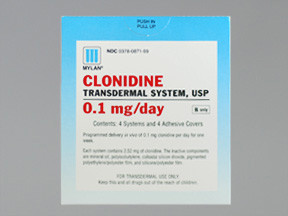
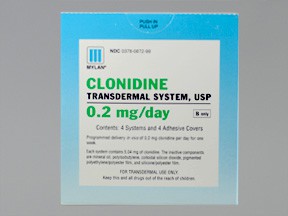
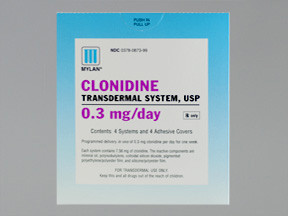
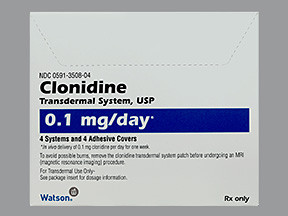

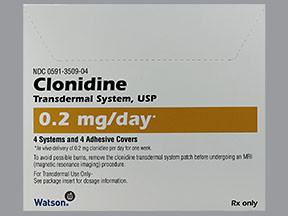

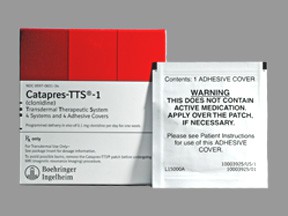
No Reviews Yet